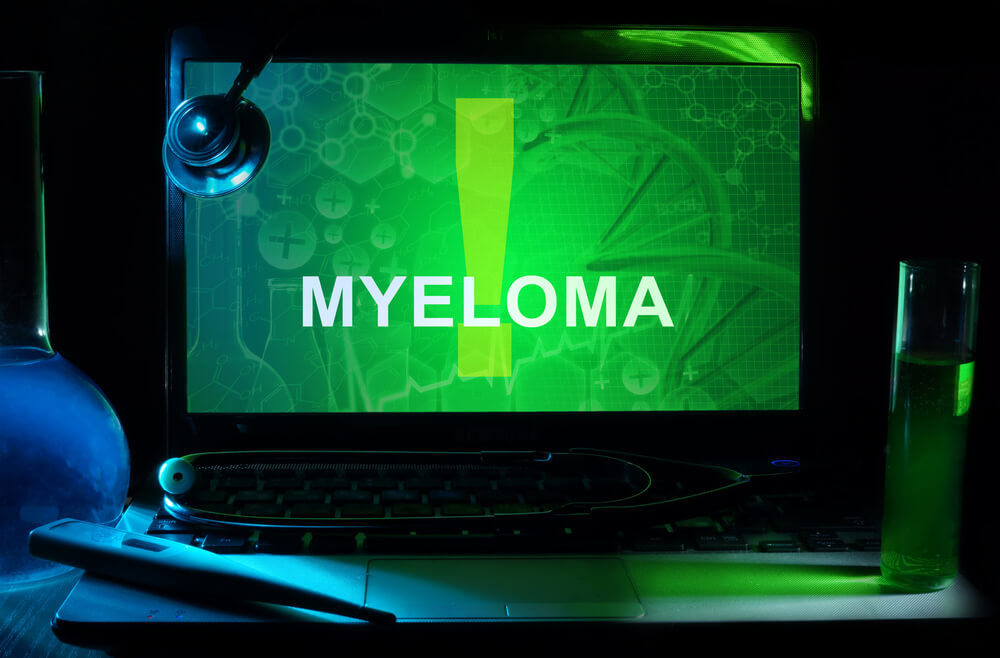Myeloma and Stem Cells
Myeloma, also known as multiple myeloma, is a blood cancer specifically affecting white blood cells. The condition gets its name from the fact that multiple places in the body can be affected where bone marrow is normally active.[1]
White blood cells are a crucial part of your immune system, producing antibodies to fight infection. In myeloma, plasma cells (a type of white blood cell) become abnormal and multiply uncontrollably. In addition, these cells only release paraprotein, a kind of antibody which has no useful function.[1]
Myeloma is a cancer which is relapsing-remitting in nature. This means that there are periods where symptoms are apparent and need treatment, followed by periods of remission where the cancer does not cause symptoms and does not require treatment.[2]
Myeloma Facts
- An estimated 103,000 people were diagnosed with the condition, worldwide, in 2008 [3]
- In 2008, the condition accounted for 12% of all blood cancers diagnosed [3]
- In 2008, the condition accounted for 1% of all cancers diagnosed [3]
- In the US, it is the 14th most common cancer [4]
- In the US, around 36,110 people are expected to be diagnosed in 2025 [4]
- In the US almost 62.4% of people diagnosed will survive five years or more after diagnosis, double what it was 20 years ago [4]
- Approximately 194,144 people in the US had myeloma as of January 1, 2022 [4]
- There are currently 767 clinical trials investigating the application of stem cells for treatment [5]
- There are currently 59 clinical trials investigating the application of cord blood stem cells for treatment [6]
Myeloma and Stem Cells
An autologous stem cell transplant uses a patient’s own stem cells which are harvested before treatment. There are several sources of autologous stem cells including; bone marrow, peripheral blood and cord blood. Autologous stem cell transplants allow patients to receive high-dose chemotherapy to kill off cancer cells before their cells are returned to them to rebuild their immune system.
Autologous stem cell transplants are the most common kind of transplants carried out in myeloma cases. Autologous stem cell transplants remove the bulk of myeloma through induction treatment, followed by chemotherapy to kill the remaining cancerous cells. The patient’s stem cells are then returned where they can rebuild the immune system. This method of treatment has the ability to kill more cells than low dose chemotherapy.[7]
References
- http://www.myeloma.org.uk/information/what-is-myeloma/
- http://www.ehaweb.org/eha-partners/collaborations/patient-organizations/myeloma/
- http://www.2020health.org/dms/2020health/downloads/reports/CaseStudy4—RevlimidandMultipleMyeloma/CaseStudy4%20-%20RevlimidandMultipleMyeloma.pdf
- https://seer.cancer.gov/statfacts/html/mulmy.html
- https://clinicaltrials.gov/ct2/results?term=myeloma+stem+cells&Search=Search
- https://clinicaltrials.gov/ct2/results?term=cord+blood+myeloma&Search=Search
- http://www.myeloma.org.uk/wp-content/uploads/2013/09/Myeloma-UK-HDSCT-Feb-14.pdf
- Frontiers in pediatrics, 7, 443. https://doi.org/10.3389/fped.2019.00443
- Lancet (London, England), 399(10322), 338–339. https://doi.org/10.1016/S0140-6736(22)00057-5
- Lancet (London, England), 399(10322), 372–383. https://doi.org/10.1016/S0140-6736(21)02017-1
The information contained in this article is for information purposes only and is not intended to replace the advice of a medical expert. If you have any concerns about your health we urge you to discuss them with your doctor.


